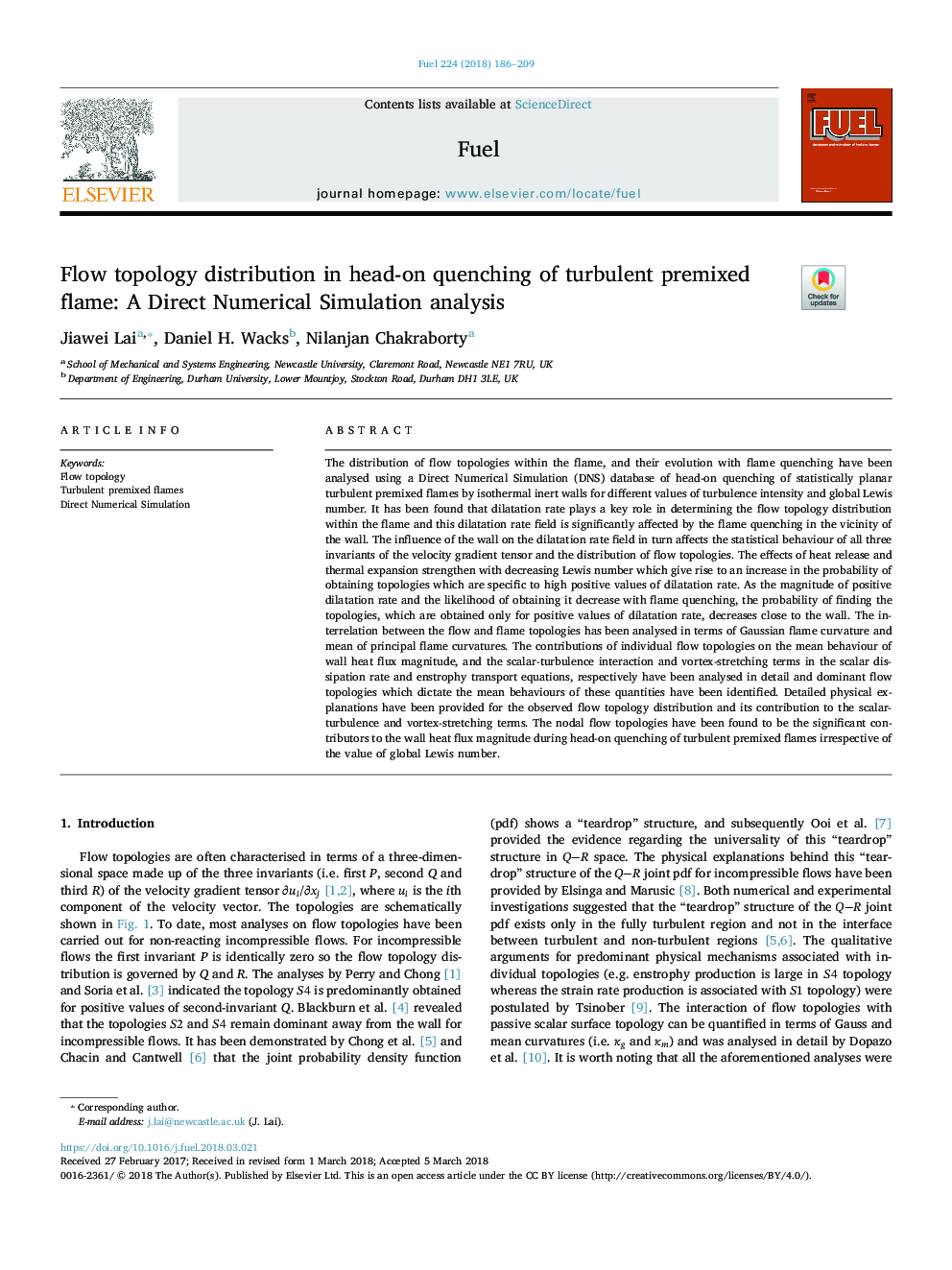| کد مقاله | کد نشریه | سال انتشار | مقاله انگلیسی | نسخه تمام متن |
|---|---|---|---|---|
| 6631123 | 1424940 | 2018 | 24 صفحه PDF | دانلود رایگان |
عنوان انگلیسی مقاله ISI
Flow topology distribution in head-on quenching of turbulent premixed flame: A Direct Numerical Simulation analysis
ترجمه فارسی عنوان
توزیع توپولوژی جریان در خنک کردن سر شعله پیش مخلوط آشفته: یک تحلیل شبیه سازی مستقیم عددی
دانلود مقاله + سفارش ترجمه
دانلود مقاله ISI انگلیسی
رایگان برای ایرانیان
کلمات کلیدی
توپولوژی جریان، شعله های پیش مخلوط آشفته، شبیه سازی مستقیم عددی،
موضوعات مرتبط
مهندسی و علوم پایه
مهندسی شیمی
مهندسی شیمی (عمومی)
چکیده انگلیسی
The distribution of flow topologies within the flame, and their evolution with flame quenching have been analysed using a Direct Numerical Simulation (DNS) database of head-on quenching of statistically planar turbulent premixed flames by isothermal inert walls for different values of turbulence intensity and global Lewis number. It has been found that dilatation rate plays a key role in determining the flow topology distribution within the flame and this dilatation rate field is significantly affected by the flame quenching in the vicinity of the wall. The influence of the wall on the dilatation rate field in turn affects the statistical behaviour of all three invariants of the velocity gradient tensor and the distribution of flow topologies. The effects of heat release and thermal expansion strengthen with decreasing Lewis number which give rise to an increase in the probability of obtaining topologies which are specific to high positive values of dilatation rate. As the magnitude of positive dilatation rate and the likelihood of obtaining it decrease with flame quenching, the probability of finding the topologies, which are obtained only for positive values of dilatation rate, decreases close to the wall. The interrelation between the flow and flame topologies has been analysed in terms of Gaussian flame curvature and mean of principal flame curvatures. The contributions of individual flow topologies on the mean behaviour of wall heat flux magnitude, and the scalar-turbulence interaction and vortex-stretching terms in the scalar dissipation rate and enstrophy transport equations, respectively have been analysed in detail and dominant flow topologies which dictate the mean behaviours of these quantities have been identified. Detailed physical explanations have been provided for the observed flow topology distribution and its contribution to the scalar-turbulence and vortex-stretching terms. The nodal flow topologies have been found to be the significant contributors to the wall heat flux magnitude during head-on quenching of turbulent premixed flames irrespective of the value of global Lewis number.
ناشر
Database: Elsevier - ScienceDirect (ساینس دایرکت)
Journal: Fuel - Volume 224, 15 July 2018, Pages 186-209
Journal: Fuel - Volume 224, 15 July 2018, Pages 186-209
نویسندگان
Jiawei Lai, Daniel H. Wacks, Nilanjan Chakraborty,
